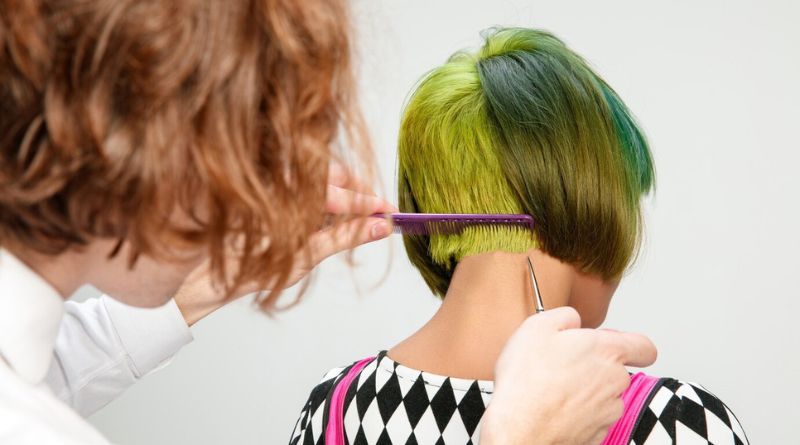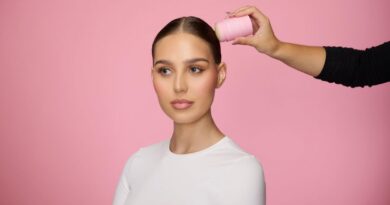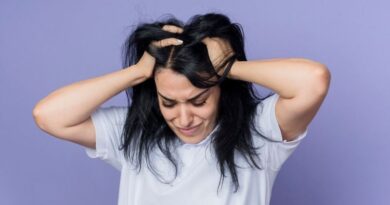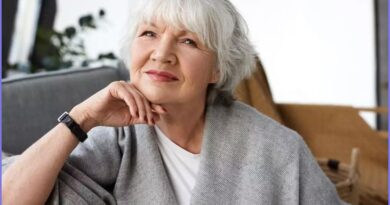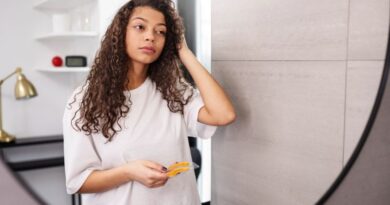Dyeing your for the desired hair color can turn into adverse results, which one cannot even imagine. One of the negative hair color results that come after dyeing hair is green hair color. If you have the green hair color shade, you may be wondering, Why is my hair turning green when I dye it?
The issue of hair turning green comes after dyeing the hair black, blue, or dyeing brown hair, & even after making a wrong hair color choice. However, it can also happen due to some chemical reactions with the original hair color. So, what are the actual reasons behind it & how to treat the green hair back to its original hair? Let’s look at them:
Why did my hair turn green after dying it black?
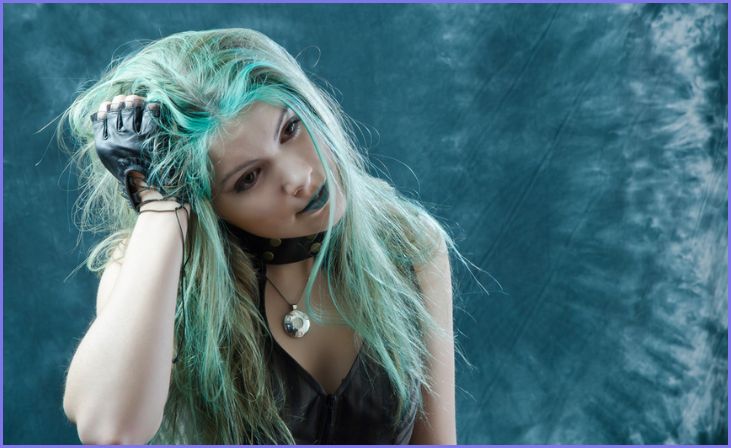
Actually, it mainly happens when you try to color light brown or blonde hair into black shades. The reason behind hair turning hair color to green is that the light brown or blonde hair has a lot of yellow shades in it & the black dye has a lot of blue pigment in it.
When you join these both pigments, the result is green color. Probably, you have a knowledge of color chart & what two-color join to make one.
So this is how the hair turns green after dying them black. The best way to avoid the greenish shades is to get the hair dyed by a professional; they will turn your black hair with the suitable dye.
Quick Link: How to make your hair wavy without heat overnight
Why did my hair turn green when I dye it blue?
The green shade comes in the hair dyed blue becuase you may have a lot of yellow pigment hair left before dyeing hair, or you may have light brown hair. So when you apply the blue dye on this hair, the yellow & blue shades will mix & will make the green color. So that’s how your hair will turn to green color.
One more reason is when you will wash your hair after dying the hair, the hair color will fade & the green shade will start to show.
The best way to avoid the green color in blue-dyed hair is to firstly bleach the hair to clear all the yellow tones & then get the blue dye on your hair. Moreover, avoid washing your hair frequently, as it also turns the hair green.
Why is my gray hair turning green?
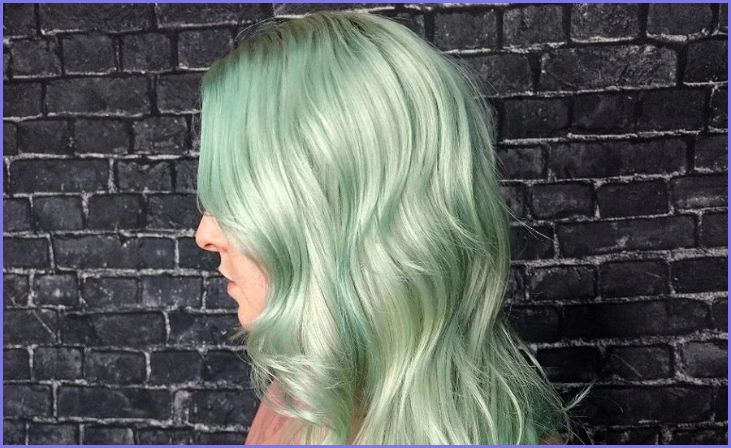
There can be different reasons for grey hair turning green. First can be due to hard minerals building up on your hair & when you get to the pool, the chlorine oxide the minerals, turning the hair green. The effect happens on all hair but is visible in light tone colors, like grey, blonde or white.
One more reason can be a variety of external factors. The inside of the hair shaft can be affected by medication or food, and hair products such as shampoo, conditioner, hair spray, mousse, and gels, which can leave a green residue.
Quick Link: Shoulder length half up mother of the bride hair
How to remove green tones from hair?
To remove green tones from hair, consider the following steps:
Clarifying Shampoo
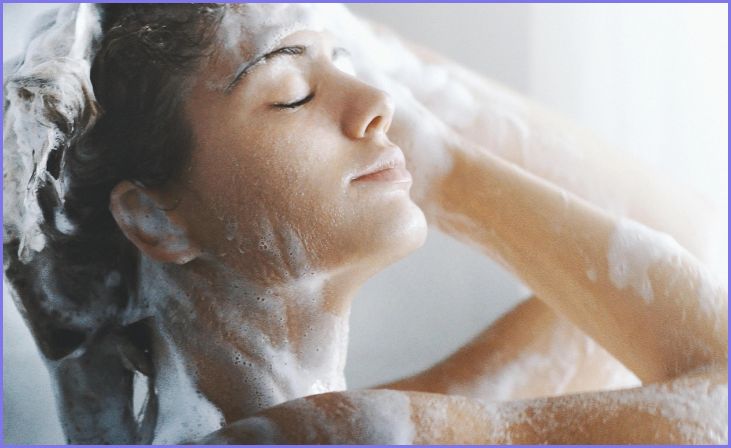
Clarifying shampoo is a specialized hair care product designed to remove accumulated residue, impurities, and product buildup from the hair and scalp. Unlike regular shampoos, clarifying shampoos are formulated with stronger cleansing agents, such as sulfates, that effectively strip away excess oils, styling products, and minerals. This type of shampoo is particularly beneficial for those experiencing issues like dullness, weighed-down hair, or unwanted tones, such as greenish discoloration.
The clarifying process helps reset the hair, leaving it clean, refreshed, and ready for further treatments or styling. While clarifying shampoos offer deep cleansing, it’s essential to use them judiciously to prevent excessive dryness. Incorporating a clarifying shampoo into your routine, perhaps once a week or as needed, contributes to maintaining healthy and vibrant hair by promoting a clean and balanced scalp environment.
Vitamin C Treatment
A Vitamin C treatment is a popular DIY method for addressing unwanted tones, particularly greenish discoloration, in hair. Vitamin C, or ascorbic acid, has natural oxidizing properties that can help neutralize and fade unwanted pigments. To create a Vitamin C treatment, individuals often crush Vitamin C tablets and mix the powder with an anti-dandruff shampoo to form a paste. This mixture is then applied to damp hair, focusing on the areas with green tones. After applying the treatment, it’s advisable to leave it on for approximately 30 minutes to allow the Vitamin C to work its magic.
Following this, thoroughly rinse the hair. The treatment is known for its gentle yet effective approach in minimizing unwanted colors, but results may vary based on the severity of the discoloration. While it can be a helpful at-home remedy, consulting with a professional colorist is recommended for more complex color issues.
Baking Soda Paste
A baking soda paste is a DIY remedy commonly used to address unwanted tones or discoloration in hair, such as green hues. To create the paste, individuals typically mix baking soda with water to form a thick consistency. This paste is then applied to the affected areas of damp hair, ensuring even coverage. Baking soda is known for its natural exfoliating and cleansing properties, making it effective in removing product buildup and certain pigments from the hair shaft.
When used for color correction, the baking soda paste is gently massaged into the hair and left on for a short duration before being thoroughly rinsed out. While baking soda can be beneficial in certain situations, it’s important to exercise caution, as excessive use may lead to dryness. Additionally, consulting with a professional colorist is recommended for more complex color issues to ensure the best results and prevent potential damage.
Professional Color Correction
Professional color correction is a specialized service offered by trained hair colorists to address unwanted or uneven hair color. When at-home or salon coloring results in unexpected tones, inconsistencies, or undesired shades, a professional color correction becomes essential. Colorists use their expertise to analyze the current state of the hair, identify the underlying tones, and formulate a targeted plan to achieve the desired color. This process often involves the application of specific color-neutralizing products, toners, or color removers to counteract unwanted pigments.
Professional color correction is crucial for minimizing damage and ensuring that the hair is restored to a healthy and vibrant state. Attempting to correct complex color issues at home may lead to further complications, making the intervention of a skilled colorist indispensable for achieving optimal results while safeguarding the integrity of the hair.
Toner or Color Remover

The choice between a toner and a color remover depends on the nature of the color issue and the desired outcome. A toner is an ideal solution for fine-tuning the undertones of pre-lightened or colored hair. It helps neutralize unwanted tones, such as brassiness or yellowing, enhancing the overall color result. Applied after the initial coloring process, toner is a relatively quick and less intensive method.
On the other hand, a color remover is a more powerful option designed to eliminate or significantly reduce existing color from the hair. This is particularly useful for correcting mistakes, lightening dark colors, or preparing the hair for a new color application. Color removers break down artificial pigments and may involve a more extensive process, potentially requiring multiple applications or subsequent coloring steps.
Also Read- How Long to Wait to Wash Your Hair After Coloring or Dying It
Bottom Line
The mystery of why dyed hair turns green is often rooted in chemical reactions, mineral exposure, or product interactions. Understanding the culprits and implementing prevention strategies is crucial for maintaining the intended hair color. In cases of unexpected color shifts, seeking professional help is advised for effective and safe correction. Armed with knowledge and the right precautions, you can enjoy vibrant and long-lasting hair color without the unwelcome surprise of green tresses.
FAQs
Common causes include exposure to minerals in hard water, chemical interactions, oxidation of metals, chlorinated pool water, or product residue.
Hard water contains copper ions that react with hair dye, resulting in a greenish tint. Regular use of clarifying shampoos can help mitigate this effect.
Yes, using incompatible hair dye chemicals or improper product combinations can trigger unintended chemical reactions, leading to a green hue.
Chlorine oxidizes hair dye, especially when exposed to sunlight, causing discoloration and a green tint. Wearing a swim cap or rinsing hair after swimming can help prevent this.

